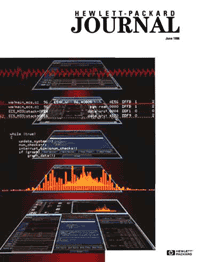|
 The most unpredictable and time-consuming part of developing a complex digital
system is the system integration phase. During system integration, the various
hardware and software subsystems finally come together for the first time. Although
the interdependencies between the various subsystems have been simulated,
emulated, and unit tested before system integration, there are always surprises. These
surprises, or "hard problems," (Article 1) dramatically affect the time-to-market
goals for the product.
The most unpredictable and time-consuming part of developing a complex digital
system is the system integration phase. During system integration, the various
hardware and software subsystems finally come together for the first time. Although
the interdependencies between the various subsystems have been simulated,
emulated, and unit tested before system integration, there are always surprises. These
surprises, or "hard problems," (Article 1) dramatically affect the time-to-market
goals for the product.
To find the root causes for these hard problems, engineers need to see what is going
on in several subsystems (e.g., operating system, memory, I/O, etc.) at once. Article 2 describes a tool that assists engineers in the search for root
causes. The tool is called the HP 16505A prototype analyzer. The HP 16505A is an X11/Motif application
that runs on an HP 9000 Model 712 workstation connected to an HP 16500 logic analyzer. This configuration
provides a graphical user interface (GUI) that enables users to create a measurement setup using icons that
represent HP 16500 hardware modules and HP 16505A software modules. The software modules display or
list the time-correlated data from the instruments in a variety of formats. To deal with the variety of data
types from the instruments and the data uniformity requirements of the analysis and display modules, data is
normalized immediately after acquisition and made available to all the output modules in a standard format
(Article 4). The selection of the encapsulated measurement server architecture of the HP 16505A
(Article 3) was based on feedback from an analysis of customer needs and requirements.
Allowing targeted users to participate in the design of a product is the best way to focus product goals and
hopefully produce a successful product. The HP 38G graphing calculator (Article 6) is a calculator
designed for precalculus students and their teachers. In addition to the typical HP design team, an Educational
Advisory Committee consisting of high school, community college, and university teachers was formed to
help in designing this product. The HP 38G is built on the same software platform as the HP 48G graphing
calculator, so it has many of the capabilities of the HP 48G but with a simpler user interface and a capability
called aplets. An aplet (Article 7) is a small application that focuses on a particular problem. Thus,
teachers can keep students focused on a particular scientific or mathematical concept (e.g., polygons) by
creating and downloading a set of aplets for students to work on.
HP OmniBook computer users are used to the idea of having a small mobile computer with some of the same
capabilities and applications as their desktop machines. However, with features such as color displays, larger
hard drives, and faster processors appearing in the HP OmniBook family of notebook computers, the
expectation is to have a full-featured notebook computer with the same capabilities as desktop computers (of
course not with the same performance as the high-performance desktop models). Article 5
describes the HP OmniBook 5000, which is a full-featured notebook computer based on the Pentium)
processor. This product is designed to satisfy the demand for a notebook computer with complete desktop
computer capabilities.
Today's mobile paging systems allow people to keep in 24-hour contact. One group of people who especially
need this kind of service are physicians caring for critically ill patients. They need access to all the clinical
patient information (graphical and textual) no matter where they are. The HP PalmVue system (Article 8) fulfills this need by allowing the transmission of clinical patient information via conventional
alphanumeric paging systems. The system integrates computer networks, palmtop computers, paging
systems, and physicians who use HP monitoring systems and cardiographs to deliver high-quality patient
data to mobile physicians.
HP divisions are always trying to find tools and processes to increase productivity and improve the quality of
products. The last two articles in this issue describe efforts aimed at these quality and productivity goals. The
first article (Article 9) describes a tool that helps system administrators deal with installing and
maintaining applications in an environment where there are hundreds of workstations and servers. The
second article (Article 10) describes software translators that facilitate the development of programs
consisting of high-level C-language modules and low-level assembly-language modules. Such dual-language
programs are common when old software modules are reused.
C.L. Leath
Managing Editor
Pentium is a U.S. trademark of Intel Corporation.
OSF, Motif, and Open Software Foundation are trademarks of the Open Software Foundation in the U.S.A. and other countries.
|
|